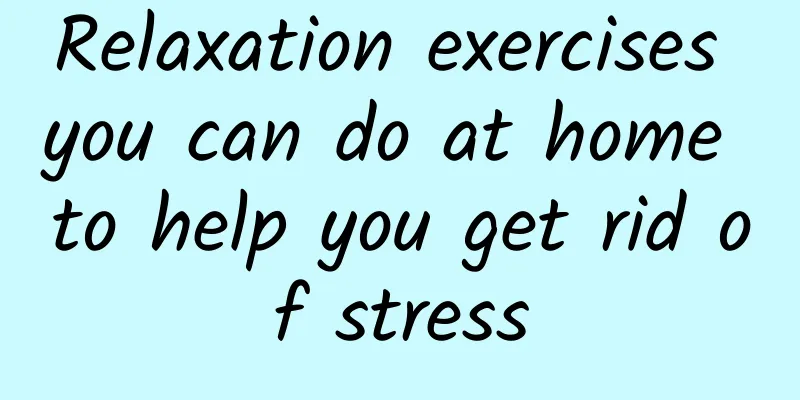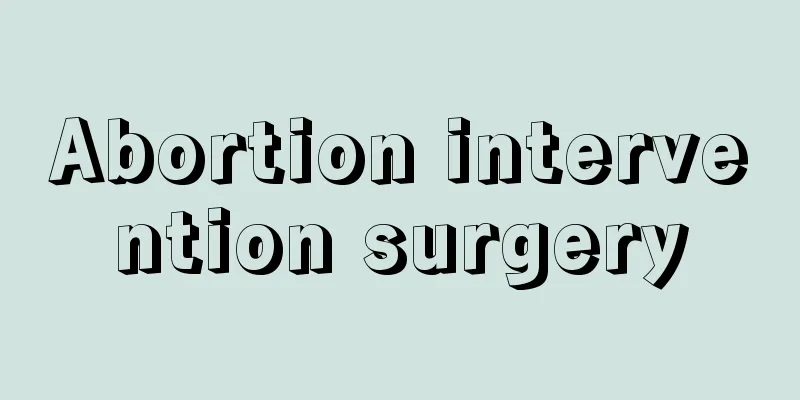Relaxation exercises you can do at home to help you get rid of stress

|
Author: Ren Feng Department of Psychiatry, Peking University Shougang Hospital Reviewer: Wang Huali, Researcher, National Center for Mental Disorders (Peking University Sixth Hospital) When facing stress, people will experience different degrees of tension, anxiety, irritability, panic, restlessness, muscle tension, shoulder and neck pain, insomnia, etc. So, how can we overcome these irritable emotions and eliminate physical discomfort? Relaxation training is a widely used psychological intervention method. A person can follow the steps at home to improve physical and psychological discomfort. 1. What is relaxation training? Relaxation training is a training method that helps individuals slowly relax from a state of tension by adjusting breathing, muscle tension, and imagery. Relaxation training can be conducted under the guidance of a psychotherapist, or you can practice it at home by listening to instructions and following the relevant operating steps. You can practice it regularly at a fixed time every day. In a relaxed state, the trainee will experience a decrease in muscle tension throughout the body, and a slowdown in breathing and heart rate. By starting to relax from the point where the muscles are tense, the trainee will consciously adjust the previous painful area, thereby achieving the effect of alleviating physical discomfort. Relaxation training can also help people further relieve psychological stress. For example, through training, many people's acute stress response when facing disasters will be significantly reduced, and the discomfort such as tension, fatigue, and mental exhaustion will gradually ease or even disappear, and people will eventually feel comfortable, clear-headed, and happy. Figure 1 Copyright image, no permission to reprint 2. What are the specific methods of relaxation training? Commonly used methods of relaxation training include progressive muscle relaxation training, abdominal breathing, intention training, self-relaxation training, etc. 1. Progressive muscle relaxation training method When a person is irritable, panicky, anxious, or has physical discomfort, neck and shoulder pain, or fatigue that cannot be attributed to medical reasons, progressive muscle relaxation training can be performed at home. The specific steps are to gradually relax the muscles of each part of the body according to the instructions, and then gradually expand to the whole body. The key point of progressive muscle relaxation training is to tense first and then relax. Only after fully feeling the tension of the muscles can you experience the feeling of relaxation. This training method is simple, clear and easy to operate, and there are few adverse reactions after training, which is suitable for the general public. 2. Abdominal breathing For people who feel stressed, anxious, panic, nervous, and deeply tired, it is suitable to practice abdominal breathing at home. Abdominal breathing is a slow-paced deep breathing exercise. The specific steps are to inhale first, use the contraction of the upper abdominal muscles to inhale oxygen deeply into the lungs, and then exhale slowly. The key to this exercise is to inhale quickly and exhale slowly. When you inhale, you can lift your upper body, and when you exhale, your upper body slowly falls back. This is a more relaxing way of training, which can gradually reduce tension, anxiety and physical discomfort. It should be noted that abdominal breathing is not suitable for patients with severe heart, brain, and lung diseases. 3. Imagery training For people who experience extreme anxiety, panic, worry, distress and severe insomnia, they can practice imagery training at home. The imagery training method is to relax the body and mind by imagining some relaxing and pleasant environments, such as blue sky, white clouds, sea, green water, green mountains, etc. When practicing, you must have a certain imagination. During the whole practice, you must keep even breathing. In the process of imagination, you should try to imagine things more vividly, realistically, and vividly, as if you were there. Being in such a refreshing and pleasant environment can gradually relieve personal anxiety, troubles, and insomnia. Figure 2 Copyright image, no permission to reprint 4. Self-relaxation training After mastering the basic relaxation training techniques, you can apply these methods to your daily life based on your own needs and physical condition, as shown below. (1) In between housework, you can further relieve the symptoms of fatigue by taking a few deep breaths and stretching the muscles of various parts of the body in place. (2) When random thoughts appear in your mind, you can shift your attention to breathing through self-training. You can achieve relaxation through deep breathing and imagery training. (3) Before going to bed every night, you can lie in bed and practice muscle relaxation and deep breathing to slowly enter a deep sleep state. This can help regulate sleep and reduce insomnia. 3. Things to note when doing relaxation training There are some details to pay attention to when doing relaxation training. 1. Make appropriate preparations before relaxation training First, you need to choose a suitable environment, a place where you feel free and safe, with soft light and suitable temperature. During practice, you should especially ensure that there are no sudden unexpected sounds or other stimulating behaviors around you, so as not to interfere with the training. Secondly, individuals should prepare themselves well before training. They should eat a small amount of food, empty their bowels and bladder consciously, wear loose clothes during training, and take off any items they carry with them (such as watches, necklaces, etc.) before training. Finally, the training location can be sitting in a chair, lying on the sofa or in bed. Figure 3 Copyright image, no permission to reprint 2. Arrangement of training time You need to practice regularly. You can choose to practice once in the morning, during lunch break, and before going to bed, each time for 10 to 20 minutes. 3. If you feel uncomfortable during training, you should respond appropriately During the training process, if an individual feels unwell, he should try to understand it slowly with an open mind, feel where the discomfort comes from, and whether it will be alleviated or changed with slow breathing. If you experience this, you can try to pause and then start again. However, if you continue to experience severe discomfort, such as chest tightness, breathlessness, dizziness, etc., you should stop the exercise immediately. 4. Imagery training can be done slowly When conducting imagery training, if a person has a biased imagination and has difficulty imagining specific scenes, he or she can try to imagine scenes in life or in movies and TV dramas, so as to slowly conduct imagery training. Under stress, everyone will be affected by external factors and experience different degrees of anxiety, irritability and other adverse reactions. Through relaxation training at home, the muscles of the whole body can be deeply relaxed, and the discomfort such as tension and anxiety can be gradually relieved, so as to resume normal work and life. |
<<: Children's urination is a "small matter"
Recommend
If the elderly want to enjoy a good meal, please keep these 8 tips!
September 20, 2023 is the 35th "National Lov...
What are the symptoms of 9 days of pregnancy?
At nine days of pregnancy, the symptoms are not p...
Can I drink honey after induced labor?
Honey is a very healthy food. Generally, honey is...
Does vaginal dilator hurt?
A dilator is a metal device. Its main function is...
What is the common reason why women do not ovulate?
The failure of women to ovulate will directly lea...
Five powerful hepatitis viruses, can you beat them? | World Hepatitis Day Special
Since ancient times, viral hepatitis has been a g...
What is the reason for the small amount of lunar diameter?
Menstruation is something that all women must exp...
How to avoid having a baby with Down syndrome? What is the Down syndrome test called during pregnancy checkup?
Many pregnant mothers do not want to give birth t...
If the power is insufficient when going uphill, should I step on the accelerator or downshift? What should I do if the power is insufficient when going uphill?
Should I step on the accelerator or downshift whe...
Fetal development chart at nine weeks of pregnancy
Diagram of the baby's development process at ...
What should I do if my progesterone level is low and I am not ovulating? You can do this
Progesterone is a type of progesterone, which is ...
What seasonings are needed for fried crispy pork? What seasonings are needed for fried crispy pork?
We all know that fried crispy pork is a popular s...
What to do if you have pain from a cesarean scar
The biggest difference between a cesarean section...
There are currently two main methods to screen for ovarian cancer and prevent ovarian cancer!
Author: Pan Lingya, chief physician of Peking Uni...
Can women drink Laozao after caesarean section? Is there any harm?
After choosing a cesarean section, the damage to ...









